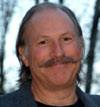Some terms are pure fun. They’re fun either because they sound intriguing or they denote a little-known phenomenon that deserves wider recognition. Some terms merely sound cool.
Each saros lasts 18 years and 101/3 (sometimes 111/3) days. That’s the common time span for a trio of lunar periods that makes an eclipse repeat itself. But that “1/3 day” places the next eclipse 120° of longitude west of the previous one.
The fabulous 61/2-minute North American total solar eclipse of July 11, 1991, gets a reprise in the United States August 12, 2045, an exeligmos later. It’ll be the longest totality in U.S. history.
How about syzygy? It’s a good Scrabble word, except you need a blank. That’s simply the three-way line-up of Earth, Moon, and Sun — like at Full Moon.
Parhelion is the name for a bright, colorful spot 22° to the left or right of the Sun. Its popular name is just as attractive: Sun Dog. How can anyone not like that?
Parhelion sounds like perihelion: the closest point to the Sun in our orbit, reached each year the first week of January.
I like quadrature, too, even though it’s of trivial consequence: the position of a superior planet when 90° from the Sun in our sky. This month, Uranus is at quadrature, so it will hover on the meridian at sunrise. I like the word simply because it contains “rat.”
Event horizon is an appealing phrase; we need more like these. Its synonym, Schwarzschild radius, is not terrible either. The meaning is wild: the distance from a black hole’s singularity, where light cannot escape because space-time is infinitely curved. It doesn’t get much better than that.
Twilight wedge deserves to be here, too. That’s the gray-blue horizontal band hugging the eastern horizon each evening at sunset. It’s nothing less than Earth’s shadow thrown into space. It’s striking and obvious, so why isn’t everyone aware of it?
While we’re out at dusk, check out crepuscular rays. They’re not visible every clear evening like the twilight wedge, but they’re not rare. The dramatic fairyland rays, emanating from just below the horizon where the Sun lurks soon after sunset, come from light shafts poking over cloud tops beyond the horizon. Crepuscular means “pertaining to twilight.” It sounds so lovely. I use the word as much as possible, even when it’s not appropriate.
Lagrangian point. Does that have zing, or what? ‘Twas named for Joseph Louis LaGrange (1736–1813), who identified five places where small objects can have happy, stable positions in equilibrium with the Earth’s and Sun’s gravities.
Know about Trojan asteroids? They’re two bunches of big rocks in Jupiter’s orbit circling the Sun while clustered 60° ahead of and behind the giant planet. They occ-upy Lagrangian points 4 and 5.
Two-word terms that contain a color are so catchy, they often get repeated by the media. Green flash, black hole, brown dwarf, red giant, blue shift. These phrases may be too well-known to qualify for our list, but they’re snappy all the same.
Cerenkov radiation. It’s sometimes spelled Kerenkov, which offers a much-needed clue to pronunciation. That’s the violet-color glow emitted when something breaks the light-speed barrier. How cool is that? Of course, nothing outruns light in a vacuum. But in denser media, like in a nebula or a nuclear reactor’s water-filled tank, the violet glow means copious subatomic particles are zooming around like faster-than-light roaches. Eerie.
I love the word maria. When pronounced Ma-RYE-uh, as in Mariah Carey, it’s the first name of the great observer Maria Mitchell (1818–1889). She blazed
a trail for women astronomers from her observatory on Nantucket Island in Massachusetts (worth a visit), then as a Vassar College professor. But pronounced differently, as MAR-ee-uh, they’re the black lava seas on the Moon, the most prominent lunar features visible to the naked eye.
What about your own favorites? Send them in, and we’ll do a reprise within a year with reader suggestions. This is fun.










